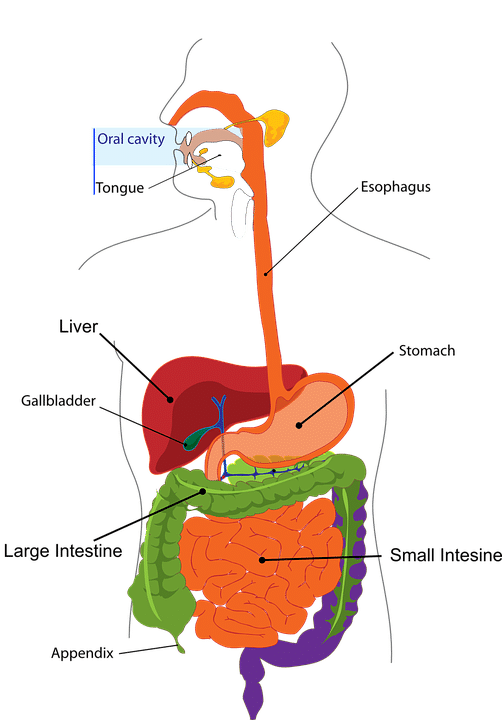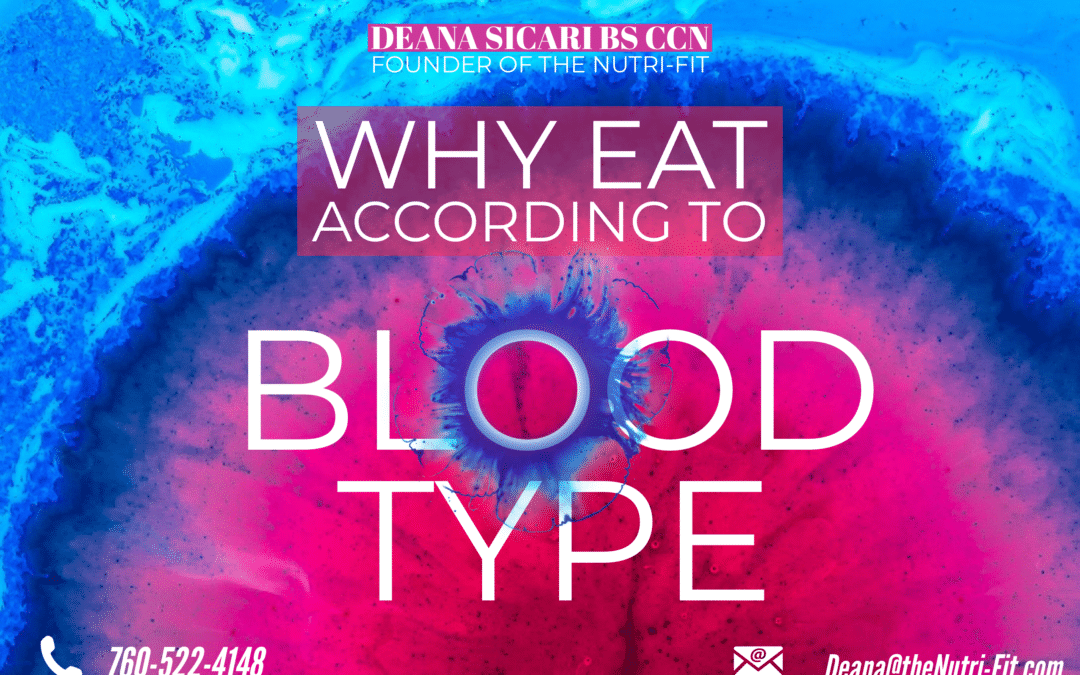
Developed by naturopathic physician Dr. Peter D’Adamo, the Blood Type Diet is based on the theory that protein-like compounds in food called lectins react with different blood types to cause a wide variety of health complaints. To help people avoid eating lectins that are incompatible with their blood type, Dr. D’Adamo provides lists of foods that are beneficial and those that should be avoided, for each blood type. Although critics have claimed the diet lacks scientific support, Dr. D’Adamo draws on a significant body of research dating all the way back to the late 19th century to support his dietary recommendations. In general, the diet recommendations for each blood type include a variety of foods and are well-balanced. Because the diet recommended for person with Type O blood emphasizes meat, care should be taken not to exceed recommended portion sizes and to balance meat consumption with adequate amounts of Type O recommended fruits and vegetables or the Blood Type O diet may provide higher than recommended amounts of saturated fat and cholesterol.
Blood Type Diet History
The Blood Type Diet is the culmination of nearly four decades of work conducted by Peter D’Adamo, ND and his father, James D’Adamo, ND. As a naturopathic physician practicing in the 1960s, James wondered why some of his patients did well on the therapeutic diets he prescribed, including strict vegetarian and low-fat diets, while others did not improve or even became worse. James suspected that the difference in the way his patients reacted to the same foods might be rooted in some aspect of the blood. With this hypothesis in mind, he began to record the blood type of his patients and observe their individualized reactions to different diets.

Over the years, distinct patterns began to emerge. He noticed that patients with Type A blood did well on a vegetarian diet, while patients with Type O did well on a high-protein, meat-based diet. In 1980, James D’Adamo published his clinical observations in a book titled One Man’s Food. That same year, Peter D’Adamo began to research the scientific basis for his father’s theories. In 1996, nearly twenty years later, Dr. Peter D’Adamo’s findings were published in his first book, Eat Right For Your Type.
Blood Principles
Dr. D’Adamo’s ideas on the relationship between diet and health are rooted in a simple concept: your blood type – O, A, B or AB – determines your body’s ability to absorb nutrients, fight off diseases, and handle stress. Dr. Peter D’Adamo’s diet recommendations were born out of evolutionary history, and, specifically, the observation that the different blood types emerged as the environmental conditions and eating styles of our ancestors changed. Between 50,000 BC and 25,000 BC, all humans shared the same blood type –
Type O. These early humans were skilled hunters, and thrived on a meat-based diet. The Type A blood type emerged between 25,000 BC and 15,000 BC, a necessary adaptation to a more agrarian lifestyle. Climactic changes in the western Himalaya mountains led to the appearance of Type B, and the blending of Type A and Type B blood types in modern civilization resulted in the appearance of the Type AB blood type. Because the emergence of new blood types made it possible for our ancestors to survive the changing environmental conditions, Dr. D’Adamo believes that blood type, diet, and health are intricately related.
According to Dr. D’Adamo, the physiological reason why people should eataccording to their blood type relates to lectins, which are protein-like substances found in many commonly eaten foods. Lectins, also known asphytohemagglutins, were first identified in 1888, at which time it was discovered that lectins interact with sugar-containing molecules on the surface of cells. This discovery allowed certain lectins to be used in blood typing, since blood type is determined by the presence (or absence) of specific sugar-protein residues on the surface of red blood cells. These residues are called antigens. Antigens play acrucial role in the function of the immune system, as they allow your body to distinguish between what is friend and what is foe. When an antigen enters your body that is unlike your blood type antigen, your immune system identifies it as a foreigner and prepares to attack and kill the invader. This process starts with the production of an antibody, which attaches to the foreign antigen, making it sticky and causing it to clump together with other antigens on viruses, bacteria, parasites, and cancer cells. This process, called agglutination, is necessary for your immune system to eradicate foreign invaders and protect you from colds, flus, and even cancer.
In the scenario above, agglutination is a clearly a good thing – it allows your immune system to remove potentially harmful agents from the body. However, the clumping of blood cells is not always beneficial. At its extreme, such clumping can cause a blockage in your blood vessels, causing a stroke. The more harmful aspects of agglutination is the key to understanding the role of diet, lectins and blood type.
Although most of the lectins found in food are destroyed by cooking, digestive enzymes, or are inactivated within the gut, at least 5% of the lectins we take in through our diet are absorbed into the bloodstream, and some of these are incompatible with our blood type. Many food lectins look very similar to the antigen that determines one of the four blood types or else bind directly to blood type antigens. In either case, this resemblance can lead to agglutination. According to Dr. D’Adamo “Simply put, when you eat a food containing lectins that are incompatible with your blood type antigen, the lectins target an organ or bodily system (kidneys’ liver, brain, stomach, etc.) and begin to agglutinate blood cells in the area.” Dr. D’Adamo implicates lectin-caused agglutination as a significant contributing factor to many common health complaints. Scientific evidence supports his contention; for example, the lectin component of gluten – a protein found in wheat and many other grains – is known to interact with the mucous membranes in the gastrointestinal tract of people with celiac disease creating inflammation. In summary, Dr. D’Adamo believes that if you want to prevent health problems, it is important to eat foods that are compatible with your blood type based upon their lectin content.
In the Blood Type Diets, foods are divided into sixteen categories: meats and poultry; seafood; dairy and eggs; oils and fats; nuts and seeds; beans and legumes; cereals; breads and muffins; grains and pasta; vegetables; fruit; juices and fluids; spices; condiments; herbal teas; and miscellaneous beverages. For each blood type, lists of foods described as “highly beneficial”, “neutral”, or “avoid” (based on the lectin content of the food) are provided for each category. In addition, a list of foods that promote weight gain and a list of foods that promote weight loss is provided for each blood type.
Research
In support of his dietary recommendations, Dr. D’Adamo points to research that provides evidence for the presence of lectins in food, the agglutinating effects of lectins, and the connection between blood type and the development of diseases.
In 1980, Nachbar and Oppenheim studied the edible portions of 88 commonly eaten foods including fresh fruits, roasted nuts, and processed cereals, and found that 29 of the 88 foods tested possessed significant lectin-like activity. The researchers also determined that dry heat does not completely destroy the lectin activity in wheat germ, peanuts, and the dry cereals. In addition, wheat germ agglutinin, tomato lectin, and navy bean lectin have been found to resist breakdown by digestive juices. As a result, it can be concluded that at least some of the lectins found in food make it into the bloodstream.
It is well-known that lectins cause red blood cells to clump together, and, consequently, certain lectins are used in the typing of human blood. In addition, researchers have shown that some lectins stimulate the conversion of resting lymphocytes into actively growing and dividing cells (Lis and Sharon, 1973 and 1972), while other researchers have demonstrated the ability of lectins to bind to isolated small intestine cells (Triadou and Audran, 1983). In Dr. D’Adamo’s view, this research provides proof that the lectins that survive the digestive system and make it into the bloodstream have the ability to bind to various cells and create a variety of health problems. Critics argue that much of the research on lectins has been performed in test tubes, and that therefore, what, if any, effects lectins have in the body has not been conclusively demonstrated.

Dr. D’Adamo also cites research that links blood type with the development of certain diseases. For example, it has been observed that individuals with blood type A have a higher incidence of achlorhydria (inadequate production of stomach acid), stomach cancer, and pernicious anemia, while people with blood type O have a higher incidence of intestinal ulcers (Buckwalter, 1956). In addition, people with Type B blood are more susceptible to slow moving viruses and autoimmune conditions (for example, multiple sclerosis and rheumatoid arthritis). Dr. D’Adamo also notes that the Framingham Heart Study examined the connection between blood type and heart disease. In this study, male patients with Type A , especially in the age group 50-59, experienced a higher incidence of fatal coronary heart disease that men with Type O. Dr. D’Adamo suggests that these results indicate a strong connection between blood type and heart disease, but the authors of the Framingham study are more tenative in their conclusion. They write, “From these data it is only possible to say that non-fatal coronary heart disease with an intermediate-term survival of 4 years seems to be associated with blood-group. For women, however, there seems if anything to be a reversal of the trend, with more heart-disease in blood group O. This trend was particularly evident in the prevalence of angina pectoris (chest pain). A rather complex hypothesis would, however, be necessary to explain the apparent inconsistencies between the sexes, and between the associations found in the prevalence and incidence data” (Havlik, 1969). Research relating other diseases, including diabetes and hyperthyroidism, to blood type has not yet been conclusive.
Foods Emphasized
Type O was the blood type of the earliest humans, who were skilled hunters and subsisted on a diet of wild game and edible plants growing wild in the forests. As a result, the diet for individuals with Type O blood emphasizes the importance of animal flesh and vegetables. If you are Type O, you are encouraged to eat lean beef, lamb, turkey, chicken, and seafood. In addition, azuki beans, pinto beans, kale, collard greens and all fruits are considered to be beneficial.
Individuals with Type A blood thrive on a plant-based diet and should consume large amounts of raw or steamed vegetables, lentils, soy beans (and soy products), pinto beans, black beans and whole grains. Berries and plums are also beneficial. Occasional consumption of poultry and fermented dairy products is also well tolerated.
The diet for individuals with Type B blood is more varied than the other blood type diets. If you have Type B blood, you are encouraged to eat seafood, beef, lamb, and dairy products. Oats and millet, green vegetables, and all fruits are beneficial. Individuals with Type AB blood are encouraged to eat lamb, turkey, cultured dairy products (yogurt and sour cream), eggs, rice, tofu, plums and cherries. Foods Avoided Individuals with Type O blood must strictly avoid dairy foods, breads and pastas made from wheat, cabbage and Brussel sprouts, and corn, and eat eggs only in moderation (although it is suggested that those individuals of African-American descent, avoid eggs).
Individuals with Type A blood should eliminate all meat products, whole fat dairy products, peppers, tomatoes, and tropical and citrus fruits. Individuals with Type B blood are encouraged to avoid chicken, bacon, ham, and shellfish entirely. In addition, it is recommended that individuals with Type B blood limit consumption of beef, wheat, rye, tomatoes and corn. Individuals with Type AB blood must strictly avoid all smoked or cured meats and limit consumption of beef, wheat, corn, tropical fruits, oranges and bananas.
Nutrient Excesses/Deficiencies
In general, Dr. D’Adamo’s diet recommendations for each blood type include a variety of foods and are well-balanced. Unless carefully followed, the Type O diet, with its emphasis on meat products, may exceed the recommended intake of saturated fat and cholesterol, which are risk factors for the development of cardiovascular disease. Meats should be eaten in the serving sizes recommended and should be accompanied by the recommended servings of fruits and vegetables.

Since the primary sources of calcium in the standard American diet are dairy products, people following the Type A diet, which does not allow these foods, must be sure to include a variety of vegetables that contain calcium to ensure adequate calcium intake. The Type A diet also excludes meat products, which are an important source of iron in the typical American diet. As a result, care should also be taken to ensure adequate intake of other foods recommended for persons with Blood Type A that are rich in iron.
Who Benefits
In general, the foods listed as “highly beneficial” or “beneficial” for each of the blood types are whole, natural foods. As a result, the blood type diets limit the consumption of many processed and refined foods that are commonly eaten in the United States. If you currently eat a standard American diet, you will significantly improve the overall quality of your diet by following the blood type
diet recommendations.
Who is Harmed
Diets that restrict whole categories of foods are not typically recommended during childhood, adolescence, pregnancy or lactation. Whenever eliminating a significant category of foods from your diet, working with a health care practitioner knowledgeable about nutrition is recommended to ensure that all your nutrient needs are met.
Blood Type Menu Ideas
Type O Diet
Breakfast
Lunch
Dinner
Type A Diet
Type A Diet
Breakfast
• Water with lemon
• Oatmeal with soy milk and maple syrup
Lunch
• Greek salad (chopped lettuce, celery, green onions, cucumber, feta cheese, lemon and fresh mint)
• Apple
• 1 slice sprouted wheat bread
• Herbal tea
Dinner
• Tofu-Pesto Lasagna
• Broccoli
• Frozen yogurt
• Coffee or herbal tea
Type B Diet
Breakfast
• Rice bran cereal with banana and skim milk
• Grape Juice
• Coffee
Lunch
• 1 thin slice of Swiss cheese, 1 thin slice of turkey breast
• 2 slices spelt bread
• Mustard or mayonnaise
• Green salad
• Herbal tea
Dinner
• Broiled Fish
• Roasted yams with rosemary
• Steamed vegetables
• Mixed fresh fruit
• Herbal tea or coffee
Type AB Diet
Type AB Diet
Breakfast
• Water with lemon
• 8 ounces diluted grapefruit juice
• 2 slices Ezekiel bread
• Yogurt-Herb Cheese
• Coffee
Lunch
• 4 ounces sliced turkey breast
• 2 slices rye bread
• Caesar salad
• 2 plums
• Herbal Tea
Dinner
• Tofu Omelet
• Stir-fried vegetables
• Mixed fruit salad
• Decaffeinated coffee
Resources
Peter D’Adamo is the author of three books on the relationship between blood type, diet and disease:
• Eat Right For Your Type
• Cook Right For Your Type
• Live Right For Your Type
Resources
Additional information on the Blood Type Diet can be found at Dr. D’Adamo’s web page, located at www.dadamo.com
.
References
• Buckwalter JA, et al. ABO blood groups and disease. JAMA 1956; 162(13):1210-1214 1956.
• D’Adamo PJ. Gut ecosystems II: Lectins and other mitogens. TheTownsend Letter for Doctors 1991 1991.
• Havilk RJ, Feinleib M, et al. Blood-groups and coronary heart-disease (letter). The Lancet August 2, 1969: 269-270 1969.
• Lis H, Sharon N. The biochemistry of plant lectins (phytohemagglutinins). Annual Review of Biochemistry 1973; 42:541-574 1973.
• Nachbar MS, Oppenheim JD. Lectins in the United States diet: a survey of lectins in commonly consumed foods and a review of the literature. American Journal of Clinical Nutrition 1980; 33:2338-2345 1980.
• Sharon N, Lis H. Lectins: Cell-agglutinating and sugar-specific proteins. Science 1972; 177(4053):49-958 1972.
• Triadou N, Audran E. Interaction of the brush-border hydrolases of the human small intestine with lectins. Digestion 1983; 27:1-7 1983.

